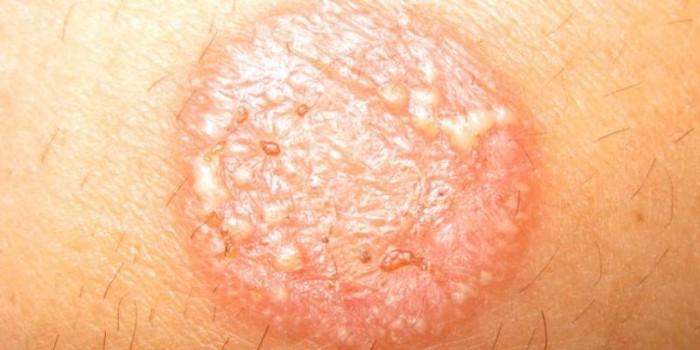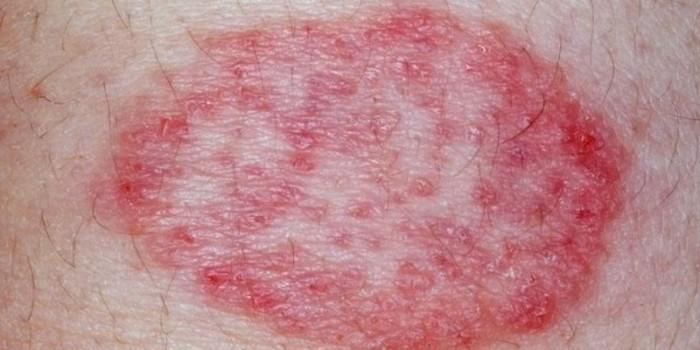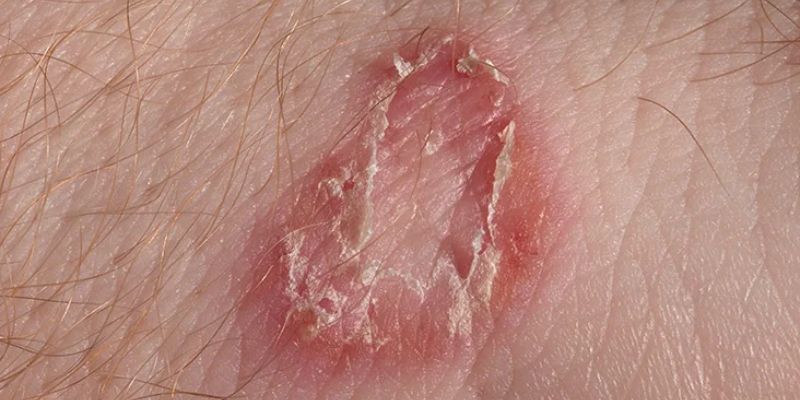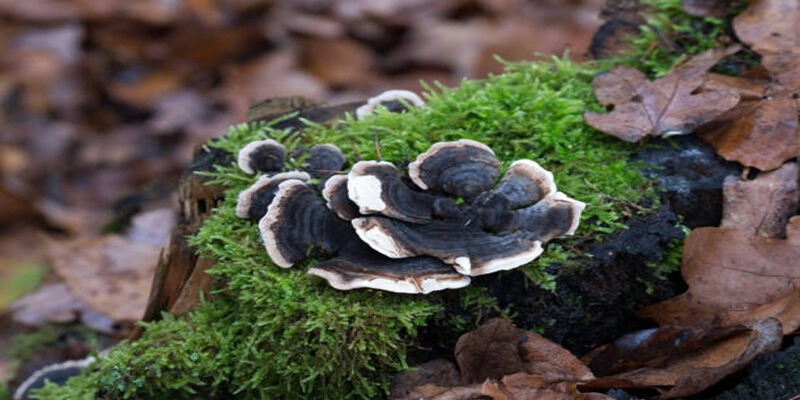Have you ever seen or proficient a circular rash that kept returning repeatedly? You're not alone. Circular rashes can be caused by anything from allergies to underlying illnesses; your health and peace of mind must determine the cause.
In this blog post, we will take a more detailed evaluation at what might be behind these types of rashes and how you can get relief from them.
Gear up to learn about the common causes of circular rash so you can best address your skin care needs.
Circular Rash
Circular rash, also known as annular rash or ringworm, is a type of skin condition that appears in the form of a reddish-brown bump or cluster of bumps shaped like a ring.
It can occur anywhere on the body and typically appears several weeks after exposure to an allergen or irritant. The most common cause of a circular rash is contact dermatitis, which occurs when the skin comes into contact with an allergen or irritant. Other causes include fungal infections, insect bites, and allergic reactions.
Circular rashes are harmless and can be treated at home with over-the-counter medications such as topical steroids or antihistamines. However, in some cases, a circular rash may be a sign of an underlying medical condition or infection and should be evaluated by a doctor.
Types of Circular Rash
Several types of circular rashes can appear on the skin. The most common type is contact dermatitis when the skin comes into contact with an allergen or irritant such as poison ivy, detergents, soaps, or chemicals.
Other types of circular rashes include:
- Tinea Corporis (ringworm): A fungal infection that appears as red, scaly patches in the shape of a ring.
- Eczema: An inflammatory skin condition that can cause an itchy, raised rash with a clearly defined border.
- Pityriasis Rosea: A scaly, itchy rash that appears as a red circle with a lighter center.
- Insect Bites: Bites from mosquitoes, fleas, or ticks can appear as a circular rash accompanied by itching and swelling.
Symptoms of Circular Rash

The most common symptom of a circular rash is a red or reddish-brown skin patch with a clearly defined border. The rash may be itchy or scaly and can vary from millimeters to centimeters. In addition, the surrounding skin may become inflamed or swollen, and there may be pain, burning, or tingling in the affected area.
If a person develops any of the symptoms mentioned above, they should consult a doctor for diagnosis and treatment. Treatment depends on the cause of the rash and may include medications such as topical steroids, antihistamines, or light therapies.
In rare cases, hospitalization may be necessary if the rash is accompanied by severe inflammation. Circular rash can be a sign of an underlying medical condition, and it is important to seek medical attention if the rash persists or worsens. Over-the-counter medications can manage most circular rashes at home with proper diagnosis and treatment.
Common Causes of Circular Rash
Circular rash is a common skin condition that can have many possible causes. Some of the most common include allergic reactions, autoimmune disorders, fungal or bacterial infections, and contact dermatitis. Allergies are the most frequent cause of circular rashes, but other conditions can also lead to this type of lesion.
Allergic Reactions: When exposed to a certain allergen such as pollen, food, or animal dander, people may develop an itchy circular rash known as hives. Hives often appear suddenly and can be quite itchy. However, they usually disappear within 24 hours without treatment.
Autoimmune Conditions: Autoimmune disorders occur when the body’s immune system mistakenly attacks healthy cells and tissues. Examples of autoimmune disorders that can cause circular rashes include lupus, scleroderma, and dermatomyositis.
Fungal Infections: Fungal infections such as ringworm and athlete's foot often create red or itchy circles on the skin. These infections are highly contagious but can be treated with antifungal medications.
Bacterial Infections: Bacterial infections such as impetigo can cause circular rashes that are red and itchy. These types of infections are usually treated with antibiotics.
Contact Dermatitis: Contact dermatitis is a type of skin reaction caused by contact with certain substances, such as dyes or soaps. It often appears as an itchy, red rash in a circular pattern. Treatment typically involves avoiding the allergen and using corticosteroid creams or ointments.
Identifying the Type of Rash by Looking at Its Color

Depending on the cause of a circular rash, its color may vary. For instance, ringworm is generally an itchy, red-brown patch with raised edges, while erythema migrans from Lyme disease appear as an expanding round or oval area, often reddish with a clear center.
Heat rash appears as small red bumps in the affected areas, and insect bites and stings may cause a rash of red bumps. A circular rash with no color, white or pale, can indicate an allergic reaction to food, medication, or insect bites. It is important to seek medical help if you experience these symptoms, as they can be potentially life-threatening.
Additionally, other factors such as the area of the body, duration, and any accompanying symptoms can help to identify what is causing a circular rash. It is important to note that there are many types of rashes with similar characteristics, so your doctor may need to perform tests or take a biopsy to accurately diagnose it.
If you are experiencing a circular rash for an unknown reason, it is best to consult a doctor for diagnosis and treatment. With the right care, most rashes can be treated quickly and without long-term complications.
FAQs
What is a rash that looks like a circle?
A circular rash is a patch of red, raised skin with a distinct circular or oval shape. It may be itchy and uncomfortable and can vary from small to large enough to cover your entire body.
What rash is in a circle that itches?
Various triggers can cause circular rashes, but the most common cause is an allergic reaction. If itching is a symptom, it may indicate that an allergen has come in contact with your skin and caused a rash.
What is a circle rash that is not ringworm?
Many different things can cause a rash that is not ringworm. It could be an allergic reaction, a skin infection such as impetigo or eczema, or contact dermatitis caused by contact with a rough surface or irritant. If you have a rash in the shape of a circle, it’s best to visit a doctor for an accurate diagnosis and treatment plan.
Conclusion
Circular rashes can be linked to a variety of causes. Although the exact symptoms may vary, they often first appear in the form of red circles that can range from mild to severe. It is important to understand the environmental factors, allergies, and infection-related causes that could be behind your rash. The color of the rash will often provide clues about its cause and could even demonstrate a potential allergy or infection present.




